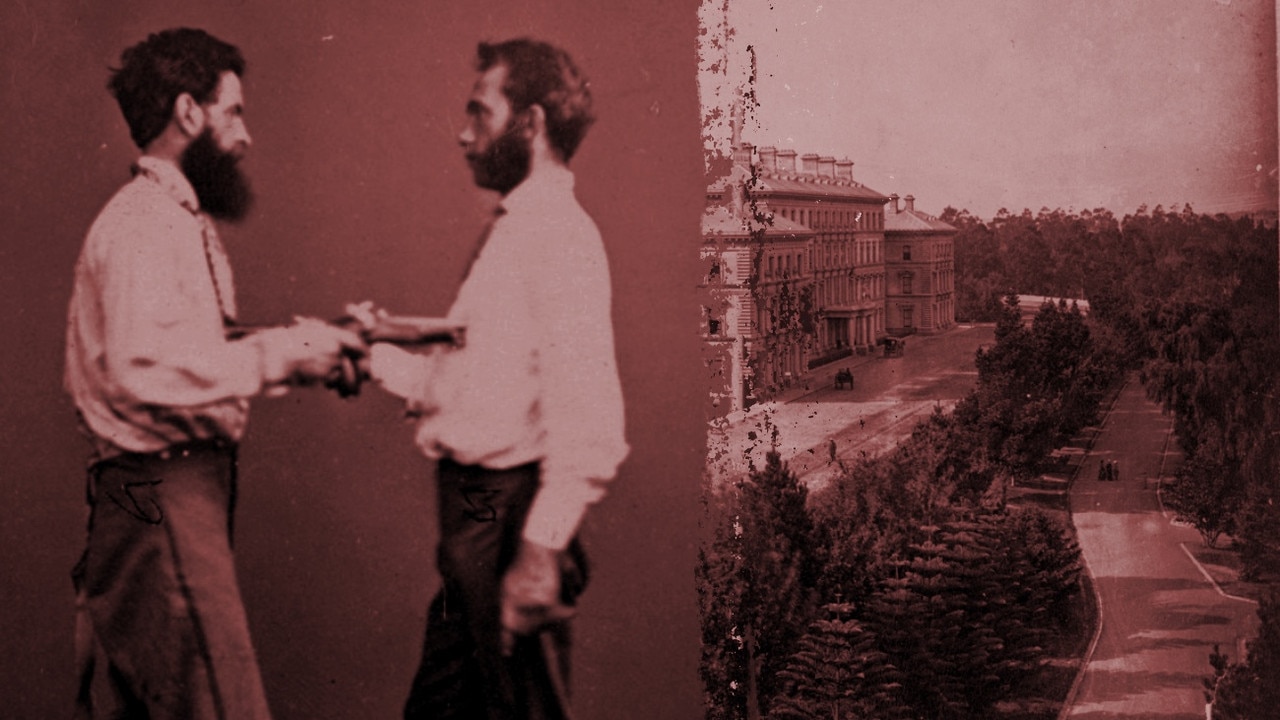AFL history: How we got the behind point
THEY’VE long been a part of footy, but did you know that behind points didn’t always count towards the score?

- History behind every club theme song
- How your club got its colours
- Fitzroy merger: How Brisbane outplayed North
SCORING from a behind didn’t exist in the earliest days of Australian rules football.
From 1878, points for behinds were listed — but only goals counted towards the score.
As a result there were a lot of drawn games.
So out of frustration, the scoring rules were changed when the VFL was established in 1896 and the behind point was born.
It remains one of the quirks of our national game — rewarding players for a miss — that bamboozles foreign observers.
So why were the behind posts even included on the footy field?


Right back at the beginning of footy in the 1850s, cricket clubs were reluctant to allow football matches to be played on their beautifully manicured ovals — relegating footy matches to parks where players had no physical boundaries.
IS THE SCORING SYSTEM IN NEED OF REVIEW? HAVE YOUR SAY BELOW
Players had to mark the field out themselves and it started as a rectangular shape.
“The easiest way to set out a playing area in a park was with a rectangle rather than an oval,” says Col Hutchinson, the AFL’s historian.
“The playing area was usually just marked out with a few sticks in the ground rather than trying to mark out a boundary in chalk.”

The main boundary was the four extremities of the rectangle, with posts to mark to outer corners and two goalposts set up in the positions we know it today, Hutchinson explains.
“So if a team kicking to their attacking end kicked the ball between the goalpost and the corner post then the expression used was: ‘The ball has gone behind the goal line’.”
If that happened, a player from the defending team would kick the ball back into play, as happens in modern AFL.

Then by the late 1800s, football was becoming popular and the cricket clubs suddenly thought they could cash in if they allowed games to be played on their grounds.
“The cricket clubs thought, if we let footy clubs use our grounds for matches we can charge them some sort of rental, and at the same time charge admission for the spectators,” says Hutchinson.
Suddenly the shape of the footy pitch changed from a rectangle to an oval, but the football administrators kept the corner posts as part of the concept, placed where the behind posts are today.
It was at this time that a new scoring system was introduced to reduce the number of draws.
A score of 12.15 against 12.9 would have been a draw under the old system but a win to the first team under the new system.
The six points for a goal and one for a miss is most likely related to cricket scoring, Hutchinson says.
“Cricketers hitting the ball over the fence were rewarded with six runs. So perhaps the cricket minded football administrators might have said: ‘OK, we’ll reward a good shot at goal as a six and we’ll regard a near miss as one’.”
There is a lot of debate over whether the behind is needed in the modern game since players now kick goals with far more accuracy.
Across the history of the sport, the conversion rate for goal ranged from a low of 38.1 per cent in 1900 to a high of 55.2 per cent in 2000, with far fewer behinds being kicked in the modern game.
Some say the behind in AFL became like a two cent coin — so worthless in the modern game it was being thrown away with the deliberate rushed behind.
That forced the AFL had to introduce a deliberate rushed behind rule in 2009, to try to stop players from forcing a point to prevent the attacking team from scoring a goal.
Umpires are often accused of being too lenient with the deliberate rushed behind rule, with the AFL warning earlier this year it would launch a crackdown.


